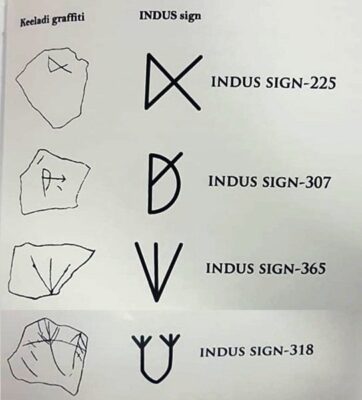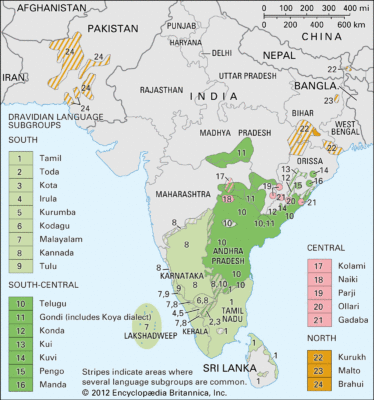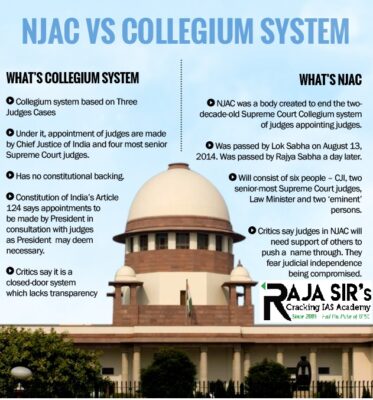- Home
- Prelims
- Mains
- Current Affairs
- Study Materials
- Test Series
20th Aug 2021
RAJNATH LAUNCHES DEFENCE INDIA STARTUP CHALLENGE 5.0
Recently, the Ministry of Defence has launched the Defence India Startup Challenge (DISC) 5.0.
Highlights






- It is launched with 35 Problem Statements (PS) from Armed Forces and OFB/DPSUs for resolution by startups & innovators.
- The winners receive grants up to Rs 1.5 crore from iDEX, along with support from Partner Incubators and guidance from the Nodal Officers who are the ultimate users.
- The launch of DISC 5.0 will be a massive leap towards leveraging the startup ecosystem to develop India’s defence technologies, equipment design and manufacturing capabilities.
- It will encourage startups to become more attuned to innovative concepts and inculcate the approach of creative thinking in India’s budding entrepreneurs.

- It was launched by the Innovations for Defence Excellence (iDEX), Defence Innovation Organisation (DIO) in 2018.
- It has been launched by Ministry of Defence in partnership with Atal Innovation Mission.
- It is aimed at supporting Startups/MSMEs/Innovators to create prototypes and/or commercialize products/solutions in the area of National Defence and Security.
- It will help in creating functional prototypes of products/technologies relevant for national security (prototyping), and spur fast-moving innovation in the India defence sector.
- It will help new tech products/technologies find a market and early customer (commercialization) in the form of the Indian Defence Establishment.
- Start-ups, as defined and recognized by Department of Industrial Policy and Promotion (DIPP), Ministry of Commerce and Industry, Government of India.
- Any Indian company incorporated under the Companies Act 1956/2013, primarily a Micro, Small and Medium Enterprises (MSME) as defined in the MSME Act, 2006.
- Individual innovators are also encouraged to apply (research & academic institutions can use this category to apply).
- The iDEX provides a platform for different stakeholders in the defence & aerospace sectors to oversee technology development and potential collaborations in the specific field.
- The iDEX is able to utilise the strong science, technology and research talent base of the country to develop new capabilities in defence innovation.
- The iDEX had been designed to infuse latest technology into military warfare closely intertwined with the needs of the Services and reduce dependence on imports.
- India expresses desire to expand the horizon of New Development Bank (NDB) for strengthening social infrastructure.

- It was proposed at the fourth BRICS Summit in New Delhi (2012) by the leaders of Brazil, Russia, India, China and South Africa.
- It is established to mobilize resources for infrastructure and sustainable development projects in BRICS and other emerging economies, as well as in developing countries.
- During the sixth BRICS Summit in Fortaleza (2014), the leaders signed the Agreement establishing the New Development Bank (NDB).
- It also provides technical assistance for projects to be supported by the NDB and engage in information, cultural and personnel exchanges with the purpose of contributing to the achievement of environmental and social sustainability.
- In 2018, the New Development Bank received observer status in the UN General Assembly, establishing a firm basis for active and fruitful cooperation with the United Nations.
- The main objectives of NDB operations are:
- Fostering development of member countries
- Supporting economic growth
- Promoting competitiveness and facilitating job creation
- Building a knowledge sharing platform among developing countries
- It was formerly referred to as BRICS Development Bank and is a multi-lateral development bank.
- Its headquarters is in Shanghai, China and the first regional office of the NDB is in Johannesburg, South Africa.
- The Bank shall have an initial authorized capital of US$ 100 billion and the initial subscribed capital shall be US$ 50 billion, equally shared among founding members.
- Providing counterbalance: It is increasingly being viewed as a counterweight to western-led global-development institutions such as the International Monetary Fund (IMF) and the World Bank.
- Lowering global US dollar reliance: The NDB will challenge US hegemony is through the lack of reliance on the US dollar.
- The BRICS plan to lend in domestic currencies, which is in contrast to the World Bank which only lends in dollars.
- Investment in sustainable infrastructure: The core purpose of the NDB is to mobilize resources for infrastructure and sustainable development.
- The agreement calls for hiring of 10 Gbps International Bandwidth for Internet Connectivity to Agartala from Bangladesh Submarine Cable Company Limited (BSCCL), Bangladesh via Cox Bazar/Kuakata.
- USOF will provide financial support to BSNL for a period of three years for hiring the aforesaid International Bandwidth.
- The availability of high speed internet access will help the citizens in access in various e-services such as e-governance, e-education, e-health, e-commerce, e-banking, etc.
- The citizens will get high-speed internet connectivity for better access to e-services in the North Eastern states.
- It is an attached office of the Department of Telecom.
- It is headed by the Administrator appointed by the central government.
- The resources for implementation of USO are raised by way of collecting universal service levy which is a percentage of Adjusted Gross Revenue (AGR) of telecom service providers.
- It is given statutory status by the Indian Telegraph (Amendment) Act, 2003.
- It is deposited in the Consolidated Fund of India and is dispatched on the approval of the Indian Parliament.
- Provide widespread and non-discriminatory access to quality ICT services at affordable prices to people in rural, remote, and unserved, areas.
- Provide an effective and powerful linkage to the hinterland thereby mainstreaming the population of rural and remote parts of the country.
- Ensure that universal services are provided in an economically efficient manner.
- Ensure that by developing hitherto unconnected areas, the benefits of inclusive growth are reaped by our nation, bringing in its wake rapid socio-economic development and improved standards of living.
- It is aimed at providing financial support for the provision of telecom services in commercially unviable rural and remote areas of the country.
- It aims to provide a balance between the provisions of Universal Service to all uncovered areas, including the rural areas.
- Its objective is to provide access to telecom services in a non-discriminatory manner to people in the rural and remote areas at affordable and reasonable prices, thereby bridging the rural-urban digital divide.

- The paper traced their language roots to proto-Dravidian by taking clues from a few words shared between the Indus Valley people and the cultures they came in contact with.
- The paper suggested that speakers of ancestral Dravidian languages had a greater historic presence in northern India including the Indus Valley region from where they migrated.
- It took into account the thriving trade relations between the Indus Valley Civilisation (IVC) and the Persian Gulf as well as Mesopotamia.
- The researchers have searched through the near-Eastern texts to locate foreign words with roots in the Indus Valley.
- The study found that the Akkadian (language spoken in ancient Mesopotamia) word for elephant- ‘pīru’/‘pīri’ and their variations, as well as the old Persian word for ivory, ‘pīrus’ possibly had roots in the Indus Valley.
- The ivory-words (e.g., ‘ab’, ‘abu’, ‘ȧb’, ‘beḥu’, ‘netcheḥ-t’) used in ancient Egypt (the only other major source of prehistoric ivory), has no phonetic connection to ‘pīru’.
- The Near Eastern ivory-objects of middle-third to early-second millennium BC with Asian elephants and IVC traders have no phonetic connection to ‘pīru’.
- The report has written that these ‘pīru’-based words could likely have originated in Indus Valley Civilisation (IVC).
- The paper suggested that in several Dravidian languages, ‘pīlu’, ‘pella’, ‘palla’, ‘pallava’, ‘piḷḷuvam’, ‘pīluru’ are used to signify elephant.
- It pointed out to the discrepancy between the use of ‘l’ in the Indic languages and ‘r’ in Akkadian and old Persian.
- It also suggested that since people of ancient Persia had functioned as intermediaries between Mesopotamia and IVC traders while exporting IVC’s ivory, they had arguably spread the Indic elephant word (‘piru’ ‘pilu’) to Mesopotamia as well.
- The paper explained that they are connected with the root words for tooth in the Dravidian languages- ‘pal’, ‘pella’, ‘pallu’, ‘palu’, which are unmistakably related to the words that mean elephant or elephant tusk, that is, ‘pīlu’, ‘pillakā’, ‘palla’, ‘pella’.
- The paper suggested that the relation between Proto-Dravidian tooth-word and the Dravidian ‘pal’/‘pīl’-based elephant-words must be deeply etymological, not accidental.
- The research paper wrote that Indian epic Mahābhārata (Ganguli, 1883–96) frequently associates the ‘pīlu’ tree with regions of Indus river basin.
- The paper concluded that the basic vocabulary items of a significant population of the Indus Valley Civilisation must have been proto-Dravidian, or that ancestral Dravidian languages must have been spoken in the Indus Valley region.

- In 2010, Ashok Parpola mapped the symbols used in the Indus Valley script and connected them to words used in modern Dravidian languages.
- In 2019, a study made a case for the spread of proto-Dravidian languages from the areas of northwestern India to southern India.
- The formation of human population in South and Central Asia suggested that after the decline of the Indus Valley Civilisation, groups from north and north western India speaking a proto-Dravidian language moved south and east.
- The possible scenario combining genetic data with archaeology and linguistics is that proto-Dravidian was spread by people of the IVC along with the Indus Periphery Cline ancestry component of the ASI.
- The non-genetic support for an IVC origin of Dravidian languages includes the present-day geographic distribution of these languages and a suggestion that some symbols on ancient Indus Valley seals denote Dravidian words or names.

- The regions speak Indo-Aryan languages that includes:
- Punjabi in Punjab with dialects Siraiki and Lahnda;
- Sindhi in Sindh, Hindi, Marwari, Gujarati in eastern parts of Greater Indus Valley;
- Dardic including Shina, Khowar, Kohistani;
- Iranian that has Baluchi, Dari, Pashto, and Wakhi in western parts of Greater Indus Valley;
- Nuristani in northeastern Afghanistan;
- Brahui spoken in Baluchistan and Sindh; and
- Burushaski, a language spoken in northernmost Pakistan close to the Chinese border
- Article 124(2): This article of the Indian Constitution reads that the Judges of the Supreme Court are appointed by the President after consultation with such a number of the Judges of the Supreme Court and of the High Courts in the States as the President may deem necessary for the purpose.
- Article 217: Indian Constitution's article states that the Judge of a High Court shall be appointed by the President consultation with the Chief Justice of India, the Governor of the State, and, in the case of appointment of a Judge other than the Chief Justice, the Chief Justice of the High Court.

- It is a system under which appointments and elevations of judges and lawyers to the Supreme Court and the High Courts.
- The transfer of judges to High Courts and the Apex court are decided by a forum of the Chief Justice of India and 4 senior most judges of the Supreme Court.
- The President had relied on the advice of the Chief Justice of the Delhi high court than the advice of the CJI and did not extend the term of an additional judge in the Delhi High Court.
- In this case, it was announced that the primacy of the Chief Justice of India (CJI) recommendation on judicial appointments and transfers can be refused on logical reason basis.
- The Supreme Court introduced a collegiums system and it said that consultation meant concurrence in appointments.
- After this, the CJIs individual opinion was not taken but an institutional opinion was formed after consulting two more senior-most judges of the Supreme Court.
- After the President suggested, the Supreme Court expanded the collegium to a five-member body rather than 3.
- It included the Chief Justice of India along with 4 senior-most judges.
- The High Court collegiums are led by the Chief Justice there along with four other senior-most judges of the court.
- The administrative burden of appointing and transferring judges without a separate secretariat or intelligence-gathering mechanism dedicated to collection of and checking personal and professional backgrounds of prospective appointees;
- A closed-door affair without a formal and transparent system;
- The limitation of the collegium’s field of choice to the senior-most judges from the High Court for appointments to the Supreme Court, overlooking several talented junior judges and advocates









 Latest News
Latest News
 General Studies
General Studies